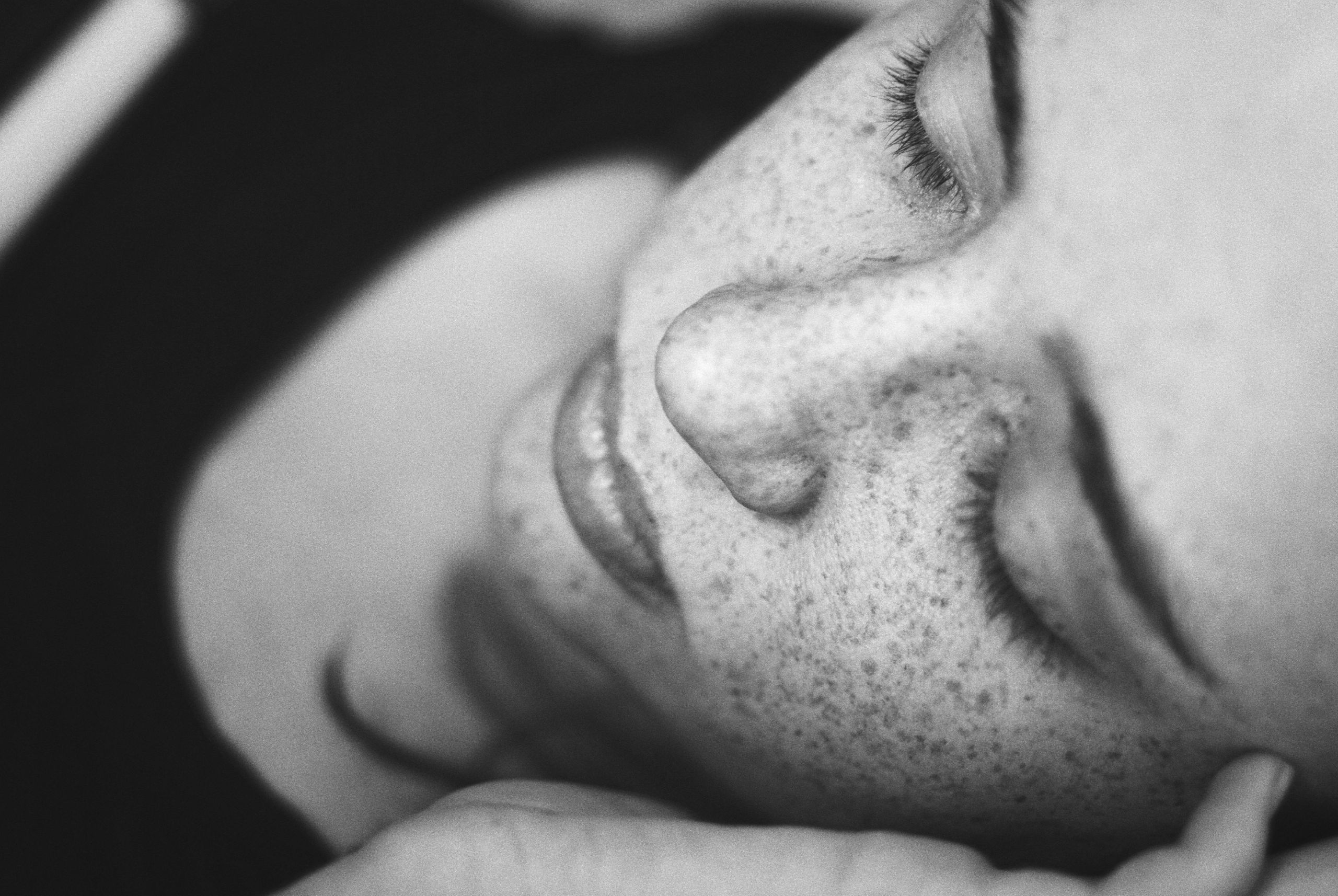Hormones and migraines: insights for each life stage of a woman
Hormonal changes in a woman’s body occur through all life stages and can play a significant factor in migraine occurrence, severity and duration. Hormonal migraine is often one of the hardest types of migraines to manage. Learn how life’s hormonal shifts affect migraines and how you manage them.
Why puberty triggers hormonal migraines
Once a girl hits puberty, hormone levels start to fluctuate. One of the big “hormonal culprits” is oestrogen. Oestrogen play a role in the regulation of mood, pain and other sensory experiences. A significant drop in oestrogen levels happens just before menstruation begins and this drop is believed to cause a migraine attack.
Hormonal fluctuations also make the brain more sensitive and can maybe explain why migraines begin or worsen during puberty. For those with a family history of migraines, the hormonal changes of puberty can act as a migraine trigger. Environmental stressors, dietary changes, and lifestyle changes that commonly occur during adolescence can also contribute to the likelihood of migraines.
It can be a lot for a young woman to digest. Not only is her body changing but she also has to deal with a debilitating migraine disorder. If you are parent to an adolescent girl with migraines, here are a few tips on how to support her the best way possible.
The reproductive years – a parade of hormonal fluctuations
During a woman’s reproductive years, a lot of monumental events happen that can affect the severity and frequency of migraines.
A great number of women start to use birth control. Birth control pills can impact migraines both negatively and positively. Birth control pills is not recommended for women that have migraines with aura as it increases the odds of a stroke. However, in migraines without aura, some doctors recommend taking birth control pills without pause to prevent hormonal or menstrual migraines. Instead of a monthly period, you will only pause the pills every 3-6 months meaning you won’t have to deal with hormonal migraines as often as every month. Talk to your healthcare professional whether this is an option for you. Also beware that you have to be under the age of 35 to get birth control pills.
Others have better control over their migraines by getting IUDs because the hormonal fluctuations are better controlled.
In terms of hormonal migraines and birth control, there is not a one size fits all solution. It is very individualised what works so I want to stress that you consult your doctor in terms of what’s best for you.
Pregnancy – expect the unexpected
One of the most monumental events that can happen in a woman’s life is pregnancy. Some women love the experience while others dislike it. And this 9 month period is unpredictable in terms of hormones and migraines.
During the first trimester, hormones such as progesterone change. Unfortunately for some, this means that their migraines worsen during this trimester. What makes it even harder is that medication use is limited due to the safety of the fetus. During the second and third trimester, especially oestrogen increase which can lead to fewer migraines.
Some migraine sufferers absolutely love pregnancy because they have 9 months without migraines. Some experience more headaches and migraines while others experience an unchanged pattern in the disorder. Pregnancy is different for every woman so expect the unexpected. If you are pregnant, here’s an article on what happens to your body when pregnant, how to avoid a migraine, medication during pregnancy, how to treat an attack and much more.
Working overtime as a postpartum mother
Your body has just been through a great ordeal following childbirth. After delivery, your oestrogen levels (which were elevated during pregnancy) decrease rapidly. This sudden drop can trigger migraines, especially in women who are sensitive to hormonal fluctuations.
Additionally, you are working overtime as a new mom. You face high levels of physical and emotional stress which are well-known migraine triggers. The demands of caring for a newborn often result in chronic sleep disruption, irregular meals and fatigue – all of which can further aggravate migraine frequency and severity.
Moreover, many mothers feel pressure to prioritise the needs of the baby over their own health, sometimes neglecting self-care and preventive practices that could reduce migraine episodes. In the bottom of this article, I have listed 4 ways to take care of yourself postpartum.
Perimenopause and menopause – instability and stability
Perimenopause is a transitional phase leading up to menopause and typically happens start-40s to early 50s. This period lasts anywhere from a few months to several years. Especially oestrogen fluctuate significantly because the body gradually reduces its reproductive hormone production. These unpredictable surges and drops can trigger migraines or increase their intensity in women who are sensitive to hormonal changes. Oestrogen is known to influence brain chemistry, particularly in areas that regulate pain sensitivity. So these fluctuations may make the brain more reactive, leading to more frequent or intense migraine episodes.
Other perimenopausal symptoms include mood swings, sleep disturbances, hot flashes and increased stress. These symptoms can indirectly contribute to migraines by disrupting sleep, raising stress levels and increasing physical and emotional fatigue – all of which are known migraine triggers.
Some women find relief from perimenopausal symptoms by getting hormone replacement therapy. Others do lifestyle changes and stress-reduction techniques. Perimenopause can be a challenging time for women prone to migraines, but understanding the connection between hormone fluctuations and migraine patterns can empower women to make informed choices about treatment and lifestyle adjustments.
Menopause – the end of hormonal migraines?
Menopause is defined as the ending of menstruation for 12 consecutive months. A hormonal shift happens as the body permanently reduces its production of oestrogen and progesterone. While perimenopause is characterised by unpredictable hormone fluctuations, menopause is defined by consistently low and stable oestrogen levels. The stability in hormones can actually reduce migraines that are triggered by hormones.
The stable oestrogen levels can also play a role in pain regulation and mood, meaning that the brain can become less sensitive to migraine triggers. It is important to emphasize that while menopause can bring a stop to the hormonal migraines, other factors can still trigger migraines such as certain food or drinks, weather changes, stress etc.
3 general tips for managing hormonal migraines
1. Track symptoms
One of the first steps in managing hormonal migraines is to keep a Migraine Calendar. Track when your migraine happened during your menstrual cycle (before, during, after), your symptoms and other triggers that may have contributed to the attack such as stress, lack of sleep etc. Also note what medication or treatment you used and their effectiveness.
You gain valuable insights by tracking and analysing your hormonal migraines so you are better able to manage them in the future. Tracking your migraines can also be beneficial if you need help from your doctor. By sharing your findings, your doctor can understand and treat your condition better.
2. Aim for stability and routines
If there’s one thing, that a migraine brain does not like, it is instability. Make sure that you carve out a life for yourself with good routines that includes regular sleep, a balanced diet, stress management and exercise. If exercise is a migraine trigger for you, here are some practical solutions to help you avoid exercise-induced migraines.
3. Ask for help
There are a great number of options available in terms of treating hormonal migraines, depending on which life stage you are in. Consult your healthcare provider in terms of your options.
Hormonal migraines can be very debilitating as they are often more severe than “normal” migraines. They not only impact your life but also if you have a partner and/or children. It is not always easy for others to understand the disorder so I’ve written the some articles that might be relevant to your family:
Understanding migraines: a guide for your significant other
Explaining migraine to children: a parent’s guide
And if you’ve just had a migraine attack, here are 4 ways to handle a migraine hangover.
This article clearly shows that women has to go through a great deal of hormonal ups and downs during their time here on earth. I want to stress that you should not suffer in silence. I strongly encourage you to track your migraines and triggers and get help from your healthcare provider to gain more control.
By understanding how hormones affect your body, you become more empowered to take proactive steps toward better migraine management.

About the author: Linda C.
I have been suffering from chronic migraines and headaches for more than 20 years so unfortunately, I know a thing or two about migraines.
I hope that by sharing knowledge and insights about migraine, you can manage the disorder more efficiently.



